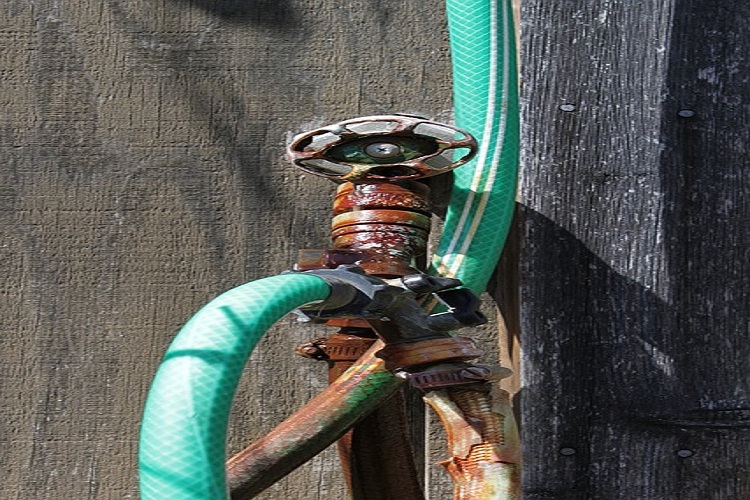
How to Prevent Water Damage from a Leaking Pipe
Indoor plumbing and clean water supply are the cornerstones of our modern civilisation.
Some may claim it’s the internet or electricity, but can the lack of either cause as much damage as the absence of indoor plumbing? Can you imagine getting back to horrid London during the Cholera outbreak?
Today the Capital has about four times as many people as it did during the joyful 1854. So you can imagine what a disgusting place London would be if people once again started throwing their waste out of the windows.
That’s why we, as a society, have such high regard for our pipes. And whenever there is even the slightest leak, we can instantly imagine the four horsemen of Armageddon following shortly after the first few drops.
Well, that might be a bit overdramatic, but still, a leaking pipe is among Brit’s worst nightmares, even if it’s not that hard to fix.
Here, let us show you.
Turn Off the Water
Whenever you see a leaking pipe, your first action should be to turn off the water supply. Working on your plumbing system without running water inside the pipes is always a good idea.
Otherwise, you will soon be searching for tips on how to dry your home after flooding. So, locate the main shut-off valve in your home and give it a gentle but firm twist.
On the one hand, this will stop the flooding process from the damaged pipe. On the other hand, you will now be able to work without worrying you will make things much worse.
If unsure about the valve’s location, consult your home’s blueprint or ask a neighbour for guidance. Finding the shut-off valve quickly will give you the upper hand in this aquatic adventure.
Cut the Electricity
Water and electricity are like whiskey and beer. They are perfectly fine on their own, but if you mix them, you will have many headaches and possibly ER visits.
And while the whiskey and beer combo may give you a brief moment of glee before the inevitable agony begins, mixing electricity and water will only bring you the latter.
Flip the circuit breaker switch off for the corresponding room or area. By doing so, you’ll ensure the safety of yourself and any unsuspecting electrical appliances that could be submerged in the watery chaos.
Remove All Valuables from the Room
When you’ve ensured your safety, it’s time to ensure your valuable belongings are also safe. It’s much like dealing with plane emergencies.
First, you help yourself, and then you help those in need. Time is of the essence here, especially if the leaking pipe is gushing water non-stop.
Start with electronics and other items that would be permanently damaged if submerged. Then, move to furniture and other objects that will be just fine when dried off. It’s a good idea to enlist the help of everyone in this matter, even children.
You can even represent it as a game. It doesn’t mean you can’t have fun while your house is ruined.
Call Your Insurance Company
Once everything is safe, it’s time to begin damage control. First order of business- get the insurance company on the line and let them know they’ll be paying.
After a brief but audible sigh from the other side, you must give some info on your policy, so be patient. Most home insurance policies cover water damage caused by leaking pipes, but it’s always better to double-check and ensure you have the necessary coverage.
Your insurance agent will provide you with the next steps and possibly recommend professional restoration services if needed.
Record All Damages
After the tedious talk, it’s time to get to another boring chore – assessing the damage. Channel your inner detective and document the water damage for insurance purposes.
Take photos or videos of the affected areas, highlighting the extent of the destruction caused by the leaking pipe. These visual records will come in handy when filing your insurance claim and remind you of this quirky, albeit inconvenient, incident in the future.
Begin Removing Water
Well, no matter how long you avoid it, the water won’t remove itself. Armed with buckets, mops, and maybe a few beach towels, it’s time to tackle the water head-on. Start by removing as much water as possible to minimise further damage. Disregarding the urge to buy a sack of sand and make your living room a beach.
Instead, calculate how many gallons of unused water you will pay the water supply company next month. This won’t help you stay calmer, but at least it will distract you from work and help you notice new damages caused by the water.
Alternatively, you can invest in a wet/dry vacuum for a more efficient water extraction process. Remember to keep your spirits high as you embark on this watery expedition.
Dry and Ventilate the Room
Once most of the water is removed, it’s crucial to dry out the affected area thoroughly. Open windows, use fans and dehumidifiers to promote air circulation and speed up drying. This is essential if you are not planning on making your own mould garden.
If your pipe breaks during the summer, especially if we have heat waves like last year, you’re in luck. However, in winter, it’s a different story. Let’s just say you’ll need a lot of electric heaters to take care of the humidity.
Discard Ruined Items
This is by far the most painful of all the tasks related to dealing with flooding. Unfortunately, not everything can be saved from water damage. Discard any items that have been ruined beyond repair.
Bid them farewell and look forward to the opportunity to redecorate or find new treasures to fill the void left behind. Try looking on the bright side. At least now you have an excuse to go on a shopping spree.
Fix the Leaking Pipe
Finally, before you start the water supply again, don’t forget what started this whole ordeal. You need to fix the pipe. If you’re a handy DIY enthusiast, you can try fixing it yourself using pipe sealants or repair kits from your local hardware store.
However, if you want guarantees that this wouldn’t happen again, it’s better to call a renowned plumbing company to fix it.
After all, saving a few bucks on calling a plumber may cause you thousands in the long run. So, if you don’t know what you’re doing, you better leave it to those who do.
Conclusion
Yes, getting your home flooded from a leaking pipe is terrible, but it happens. The main thing you should remember is to deal with it calmly and with dignity. We already showed you the way. Now it’s time to make sure you follow the path strictly.


